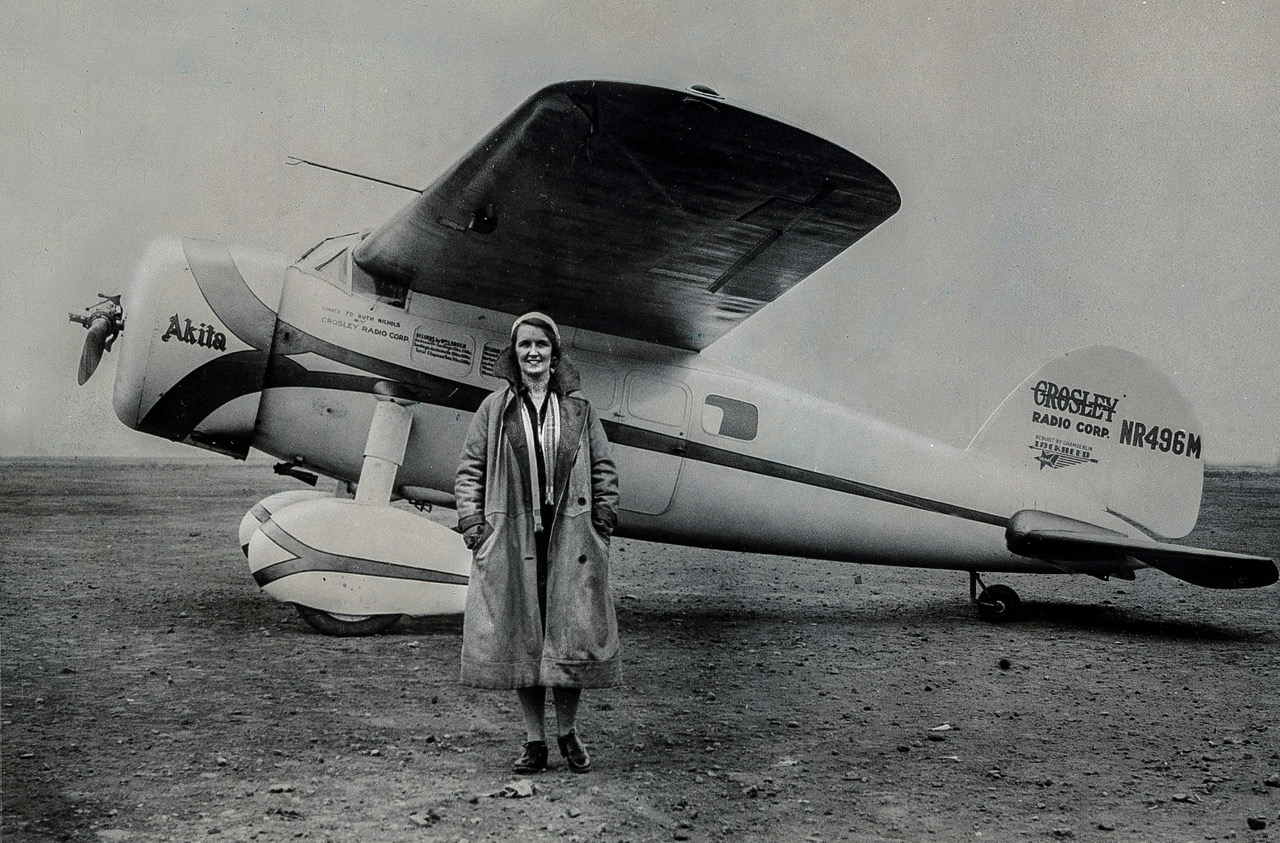
22 June 1931: In the late 1920s through mid-1930s, Miss Ruth Rowland Nichols was one of the best-known American women in aviation. She was the only person to have simultaneously held world records for speed, distance and altitude.
Miss Nichols planned to become the first woman to fly solo across the Atlantic Ocean. On the afternoon of 22 June 1931, she took off from Mitchel Field, Long Island, New York, to stage for the transatlantic flight at Harbor Grace, Dominion of Newfoundland, making an intermediate stop at Saint John, New Brunswick, Dominion of Canada.

While landing at the Saint John airport in Millidgeville, her plans went awry. . .
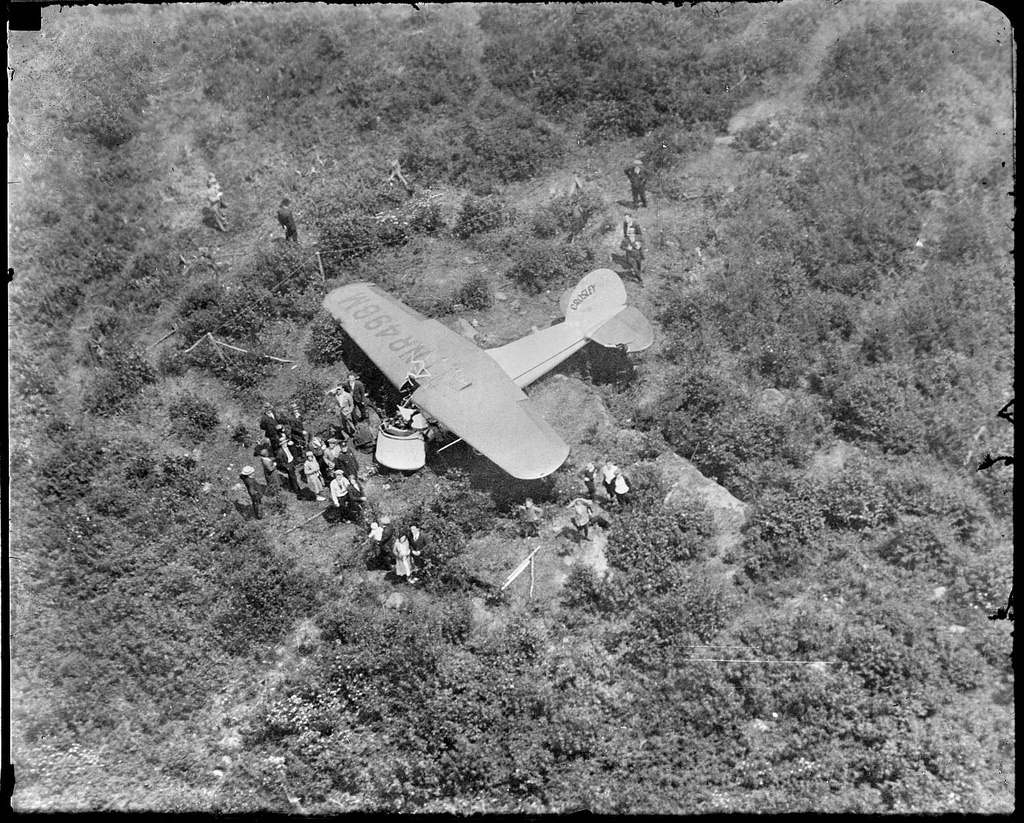
Miss Nichols wrote about it in Wings For Life:
As I peered down at a tiny airport set like a bowl in the midst of surrounding wooded hills and cliffs, I thought at first I must be off course—this couldn’t be the St. Johns field. . .
Twice I circled, studying the small, rock-enclosed field from every angle. How on earth could the heavy, fast Lockheed land there? Those crossed runways would be safe only for small or lightly-loaded planes. . .
Because of the wind direction, I would have to use the shorter of the two runways—and even the longer one was inadequate. I flew back over the town, then headed back toward the airport while cutting the throttle to minimum flying speed.
I slid in over the trees and edged through a narrow ravine. So far, so good. Maybe my luck was holding. Dead ahead was the runway. I made an S turn for the proper approach and headed straight into the blinding rays of the sun. I couldn’t look ahead to gauge the length of the runway, because ahead was a fiery glare. Only by staring down through the cockpit window could I see even the edge of the runway. . .
Suddenly the dazzling blaze of the sun was doused by the shadow of a cliff and I saw to my horror that I had passed the intersection and still had flying speed. . .
. . . then came a splintering crack as the tail broke through the treetops. More rocks ahead—a deafening shuddering C-R-A-S-H—then paralyzing silence. From seventy miles an hour minimum climbing speed with a load the motor impacted to a dead stop. The whole back end of the ship must be coming over on top of me, relentlessly bearing down, pushing my head and shoulders down between my knees.
Splintering pain, and the silence of catastrophe.
—Wings for Life, by Ruth Nichols, J.B. Lippincott, Philadephia, 1957
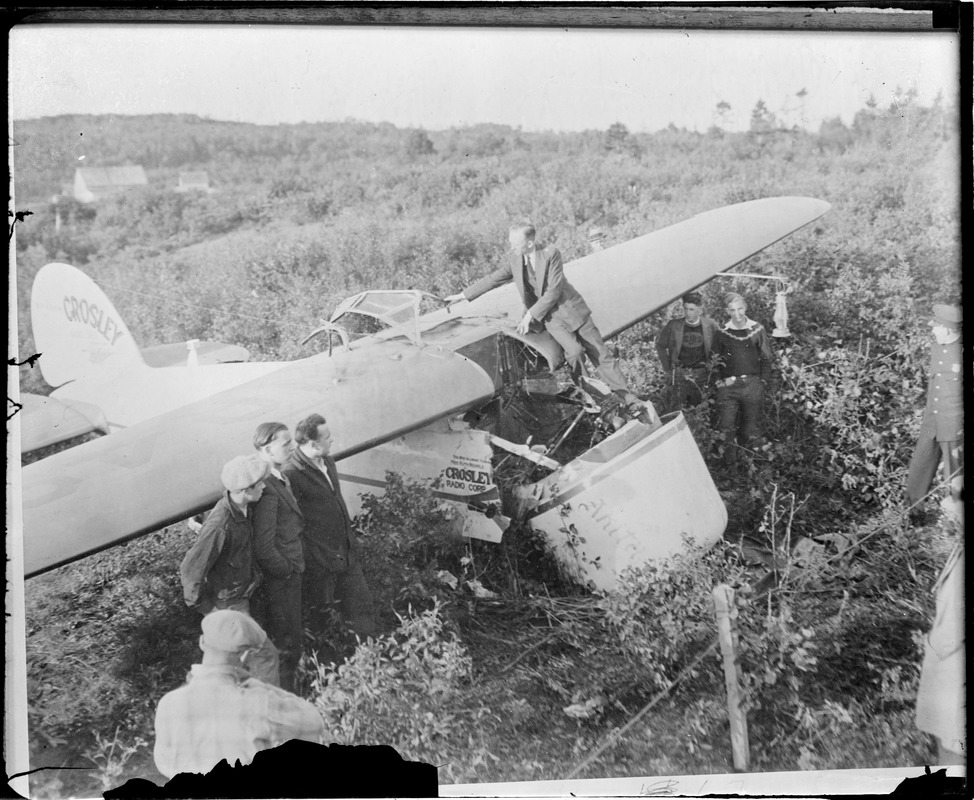
Ruth Nichols suffered five fractured vertebrae and would spend months recovering. The airplane would be repaired. This was not the first time the Vega had been damaged, nor would it be the last.
A contemporary newspaper reported the accident:
. . . She had left New York at 3:22 P.M. and it was just 3 hours and 48 minutes later that she cracked up, at 7:10 P.M., New York time.
A great crowd had gathered at the St. John airport to see her land. She had announced her intention of spending the night there and proceeding to Harbor Grace, N. F., tomorrow.
Blinded by Sun.
Her plane hove into sight and took a long graceful slant downward to alight. Then, as she straightened out to land, the sun shone full into her eyes. For just one second she was blinded and in that second overshot the runway and nosed over.
Mechanics at the field awaited the arrival of Col. Clarence Chamberlin, Miss Nichols’ technical adviser, to decide what could be done for the plane.
—Daily News, Vol. 12, No. 310, Tuesday, 23 June 1931, at Page 13, Column 1
Miss Nichols did not make the solo transatlantic flight. That would take place the following Spring. The pilot would be Miss Amelia Mary Earhart.
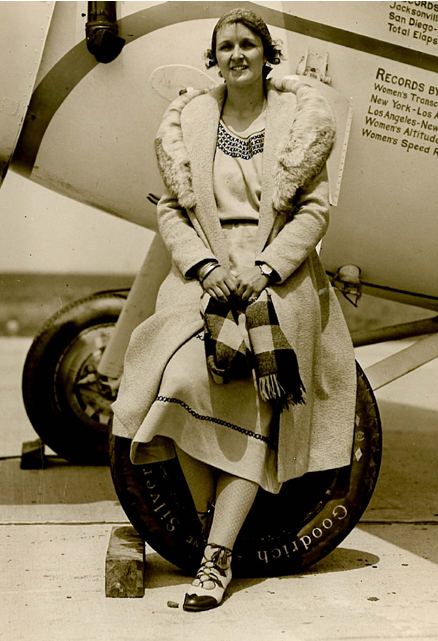
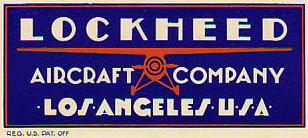
Built by the Lockheed Aircraft Company, Burbank, California, the Vega was a single-engine high-wing monoplane with fixed landing gear. It was flown by a single pilot in an open cockpit and could be configured to carry four to six passengers.
The Lockheed Vega was a very state-of-the-art aircraft for its time. The prototype flew for the first time 4 July 1927 at Mines Field, Los Angeles, California. It used a streamlined monocoque fuselage made of molded plywood. The wing and tail surfaces were fully cantilevered, requiring no bracing wires or struts to support them.
The Model 5 Vega is 27 feet, 6 inches (8.382 meters) long with a wingspan of 41 feet (12.497 meters) and overall height of 8 feet, 2 inches (2.489 meters). Its empty weight is 2,595 pounds (1,177 kilograms) and gross weight is 4,500 pounds (2,041 kilograms).
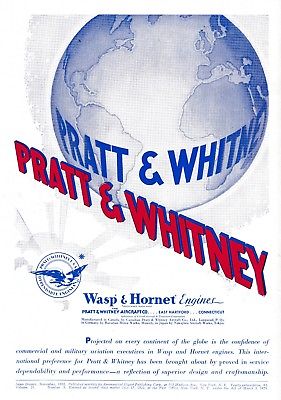
The standard Vega 5 had a cruising speed of 165 miles per hour (266 kilometers per hour) and maximum speed of 185 miles per hour (298 kilometers per hour). The service ceiling was 15,000 feet (4,572 meters). Range with standard fuel tanks was 725 miles (1,167 kilometers).
© 2019, Bryan R. Swopes